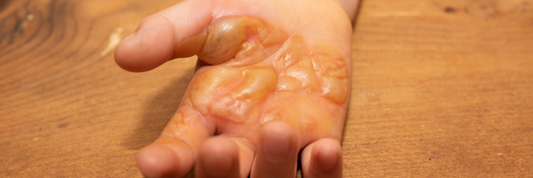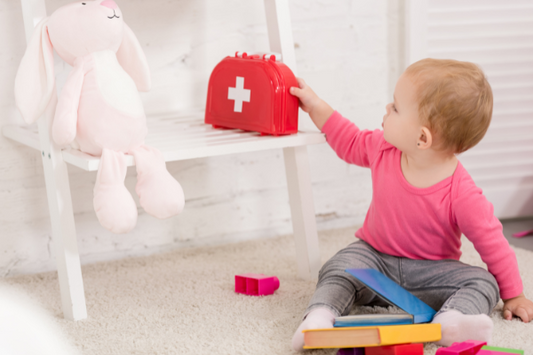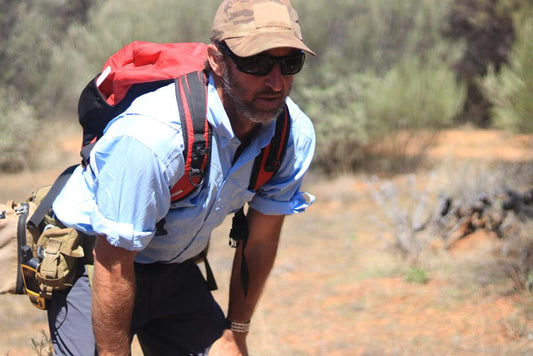Your Essential Guide
As an Australian business owner, ensuring the safety and well-being of your employees and customers is paramount. One crucial aspect of this is having the right first aid kit readily available. But with so many options on the market, how do you determine what first aid kit your business truly needs to comply with Australian regulations and provide adequate care?
This comprehensive guide will walk you through the key considerations for choosing the perfect first aid kit for your Australian business, ensuring you're prepared for any minor or major injury that may occur.
Understanding Your Legal Obligations in Australia
First and foremost, it's vital to understand your legal responsibilities regarding workplace first aid in Australia. While specific regulations can vary slightly between states and territories, the general principle is that employers have a duty of care to provide a safe working environment. This includes ensuring access to appropriate first aid equipment and facilities.
Key considerations include:
-
Work Health and Safety (WHS) Regulations: These regulations outline the general requirements for first aid in the workplace. Familiarise yourself with the specific regulations in your state or territory.
-
Code of Practice: Your industry might have specific Codes of Practice that provide guidance on the type and quantity of first aid equipment required.
-
Risk Assessment: Conducting a thorough risk assessment of your workplace is crucial. Identify potential hazards and the types of injuries that could occur. This will directly influence the contents and size of the first aid kit you need.
-
Number of Employees: The number of employees you have will impact the size and contents of your first aid kit. More employees generally mean a need for a more comprehensive kit.
-
Location and Accessibility: The location of your workplace and the accessibility of the first aid kit are important factors. Kits should be readily available and clearly marked.
Key Factors to Consider When Choosing Your Business First Aid Kit
Beyond the legal requirements, several practical factors will help you select the most suitable first aid kit for your business:
-
Industry and Activities: A construction site will have different first aid needs compared to an office environment. Consider the specific risks associated with your industry and the tasks your employees perform. For example, businesses in the agriculture sector or those with employees working remotely may require more specialised kits addressing potential snake bites or serious bleeding.
-
Potential Injuries: Based on your risk assessment, identify the most likely types of injuries that could occur. This might include cuts, burns, sprains, strains, eye injuries, or even more serious incidents. Ensure your kit contains the necessary items to address these potential injuries effectively.
-
Number of First Aiders: Designate trained first aiders within your workplace. The number of first aiders and their level of training might influence the complexity and contents of your first aid kit.
-
Kit Portability: Consider whether you need a static first aid kit or portable kits for employees who work off-site or in different areas.
-
Maintenance and Replenishment: Establish a system for regularly checking and replenishing your first aid kit to ensure all items are within their expiry dates and in good condition.
Content is Key: What Should Your Business First Aid Kit Include?
A standard business first aid kit in Australia generally includes items to treat common minor injuries. However, depending on your specific needs, you may need to customise it. Here's a general guide to common contents:
-
Dressings: Adhesive dressings (various sizes), crepe bandages (various widths), triangular bandages, wound dressings.
-
Bandages: Elastic bandages for support.
-
Tapes: Adhesive tape for securing dressings.
-
Antiseptics: Antiseptic wipes or solution.
-
Eye Care: Eye wash solution.
-
Instruments: Scissors, tweezers.
-
Gloves: Disposable gloves (nitrile or latex).
-
Resuscitation: CPR mask or shield.
-
Thermal Management: Emergency blanket.
-
Information: First aid guide, accident report book.
Unique Australian Perspective: Be Prepared for Local Hazards
While standard first aid supplies are essential, Australian businesses should also consider the unique environmental hazards present in our country. Depending on your location and industry, you might need to include items such as:
-
Snake Bite Bandages: Especially crucial for businesses operating in rural or outdoor areas. Ensure staff are trained in their application.
-
Insect Repellent: For businesses with outdoor workers to prevent bites and stings.
-
Sunscreen: To protect outdoor workers from Australia's harsh UV rays.
-
Burn Gel: For workplaces with potential burn risks.
-
Specific Allergy Medications: If employees have known severe allergies (with their consent and appropriate training).
Where to Purchase Your Business First Aid Kit in Australia
Numerous reputable suppliers across Australia offer a wide range of business first aid kits. Consider purchasing from established providers who understand Australian regulations and can offer guidance on selecting the right kit for your needs. You can find suppliers online or through business supply stores. Ensure the kits you purchase meet Australian standards.
Regular Checks and Maintenance: Don't Let Your Kit Expire!
Once you have your first aid kit, it's not a set-and-forget situation. Regular checks are crucial to ensure its effectiveness. Implement a system for:
-
Monthly Inspections: Check expiry dates of all items and replenish any used or expired supplies.
-
Inventory Tracking: Keep a record of the kit's contents to easily identify what needs replacing.
-
Accessibility Checks: Ensure the kit is readily accessible, clearly marked, and that all staff know its location.
Here are additional sections for each of the specified first aid kit types, keeping an Australian context in mind:
Trade and Construction First Aid Kits: Built for Tough Conditions
The trade and construction industries in Australia present unique hazards, demanding first aid kits that go beyond the basics. These kits need to be robust, portable, and equipped to handle common injuries on worksites.
Additional Content Focus:
Durability and Portability: Highlight the need for tough, weatherproof containers that can withstand the rigours of a construction site. Mention options like hard cases or heavy-duty bags. Emphasise the importance of portability for workers moving around the site.
Specific Injury Focus: Detail inclusions relevant to common construction injuries:
Larger and More Variety of Dressings: For cuts, abrasions, and potential for larger wounds.
Eye Injury Provisions: Eye wash ampoules or bottles are critical due to dust, debris, and potential chemical splashes. Include eye pads and bandages.
Burn Treatment: Burn gel or dressings for potential burns from machinery or materials.
Heavy Bleeding Control: Consider including tourniquets or haemostatic dressings in high-risk environments (ensure trained personnel are available).
Splints and Supports: For potential sprains and fractures.
Snake and Spider Bite Considerations: For outdoor construction sites, particularly in regional Australia, include snake bite bandages and information on their use.
Sun Protection: Emphasise the inclusion of sunscreen and lip balm with SPF due to prolonged outdoor exposure.
Dust Masks: While not strictly first aid, including a few disposable dust masks can help prevent respiratory irritation while awaiting proper medical attention for dust-related incidents.
Hospitality First Aid Kits: Quick Response for Customer and Staff Well-being
Hospitality environments in Australia, from bustling cafes to busy hotels, require first aid kits that can address a range of minor injuries quickly and efficiently, ensuring minimal disruption to service and care for both staff and patrons.
Additional Content Focus:
Hygiene and Single-Use Items: Emphasise the importance of single-use items to maintain hygiene in food handling and customer-facing areas.
Minor Burn Relief: Include burn cream or gel for kitchen-related incidents.
Cut and Grazing Care: A good supply of various sized adhesive dressings for minor cuts from handling equipment or glassware.
Headache and Pain Relief: Consider including a small supply of common over-the-counter pain relievers (ensure adherence to workplace policies regarding medication).
Allergy Considerations: While not a standard inclusion, highlight the importance of having a documented procedure for dealing with allergic reactions and knowing the location of any personal allergy medications staff or customers may carry.
Spill Response: While not direct first aid, including basic spill clean-up items (like absorbent cloths) in the vicinity of the kit can prevent slips and falls.
Discreet Packaging: Suggest options for discreetly stored kits that are easily accessible but don't detract from the customer environment.
Office First Aid Kits: Essential for Everyday Incidents
Office environments in Australia might seem low-risk, but minor injuries can still occur. Having a well-stocked and easily accessible first aid kit ensures a quick response to common workplace incidents.
Additional Content Focus:
Focus on Minor Injuries: Emphasise items for cuts, scrapes, headaches, and minor sprains or strains.
Ergonomic Considerations: While not kit contents, briefly mention the importance of ergonomic practices to prevent musculoskeletal injuries, which might necessitate items like cold packs or supports in the kit.
Eye Strain Relief: Include eye wash for minor irritations from prolonged screen use.
Hand Sanitiser: While not traditional first aid, its inclusion promotes hygiene and can prevent the spread of minor infections.
Headache and Pain Relief: Similar to hospitality, consider a small supply of common over-the-counter pain relievers (with appropriate workplace policies).
Accessibility and Signage: Stress the importance of clearly marked and easily accessible kits on each floor or in key areas.
Regular Stock Checks: Remind readers that even in low-risk environments, regular checks for expired or used items are crucial.
School First Aid Kits: Caring for Students and Staff
First aid in Australian schools requires a comprehensive approach, catering to the diverse needs of students and staff, from minor playground scrapes to more serious incidents.
Additional Content Focus:
Age-Appropriate Supplies: Consider having a range of dressing sizes suitable for children.
Specific Injury Considerations: Include items for common childhood injuries like grazes, bumps, and nosebleeds.
Allergy Management: Emphasise the critical need for clear protocols and potentially separate kits or designated areas for managing allergies and anaphylaxis, including EpiPens (with trained staff and individual student plans).
Head Injury Protocols: Highlight the importance of having guidelines and documentation for managing potential head injuries.
Hygiene and Infection Control: Stress the need for ample disposable gloves and antiseptic wipes.
Comfort Items: Consider including items like instant cold packs for bumps and bruises.
Communication and Documentation: Emphasise the importance of clear procedures for reporting incidents and documenting first aid administered.
Sports Club First Aid Kits: Ready for Action and Recovery
Australian sports clubs, whether amateur or professional, need first aid kits designed to address the specific injuries common to their sport, ensuring the safety and well-being of participants.
Additional Content Focus:
Sport-Specific Injury Focus: Tailor the kit to the common injuries of the sport (e.g., ankle supports and strapping tape for field sports, cold packs for muscle strains, CPR resuscitation masks for water sports).
Hydration and Heat Management: Consider including electrolyte replacement solutions or information on managing heat-related illnesses, especially for outdoor sports in the Australian climate.
Sprains and Strains: Include elastic bandages, cold packs, and potentially crutches (depending on the level of the club).
Bleeding Control: Ensure a good supply of various dressings and potentially antiseptic wipes.
Emergency Information: Include laminated cards with emergency contact numbers and procedures for calling for further medical assistance.
Portability and Accessibility: Kits should be easily transportable to training grounds and game locations.
Tour Group and Hiking First Aid Kits: Prepared for the Unexpected in the Australian Outdoors
Leading tour groups or embarking on hikes in Australia demands a well-equipped and portable first aid kit to handle potential injuries in often remote locations.
Additional Content Focus:
Lightweight and Durable: Emphasise the need for lightweight, compact, and waterproof or water-resistant kits.
Remote Area Considerations: Include items for more serious injuries where immediate medical help might be delayed:
Snake and Spider Bite Bandages: Essential for Australian conditions.
Wound Closure Strips: For deeper cuts.
Pain Relief: A more comprehensive supply of pain relievers.
Blister Treatment: Moleskin or blister plasters are crucial for hikers.
Water Purification Tablets/Information: In case of emergency water sources.
Emergency Whistle and Signalling Device: For attracting attention in remote areas.
Navigation and Communication: While not strictly first aid, consider including a basic compass and emergency communication device (if applicable).
First Aid Guide for Remote Situations: A concise guide with instructions for managing common injuries when professional help is not immediately available.
Vehicle First Aid Kits: Safety on the Road in Australia
Having a well-stocked first aid kit in vehicles in Australia is crucial for addressing injuries that may occur during travel, whether it's a daily commute or a long road trip through regional areas.
Additional Content Focus:
Compact and Secure Storage: Highlight the need for a compact kit that can be securely stored in the vehicle (e.g., under a seat or in the boot) to prevent it from becoming a projectile in an accident.
Roadside Incident Focus: Include items relevant to common vehicle-related injuries:
Larger Dressings: For potential cuts and abrasions from accidents.
Reflective Vest: To ensure visibility at accident scenes.
Emergency Blanket: For shock or weather protection.
Gloves: To protect the first aider.
Scissors (Safety Tip): To cut clothing if needed.
Snake Bite Bandage: Particularly important for those travelling in rural or outback areas.
Basic First Aid Guide: A simple guide that can be easily referenced in an emergency.
Regular Checks: Remind drivers to regularly check their kit for expired or used items, especially after any incident, no matter how minor.
Conclusion: Investing in Safety is Investing in Your Business
Choosing the right first aid kit for your Australian business is not just about compliance; it's about demonstrating your commitment to the safety and well-being of your team and anyone who interacts with your business. By understanding your legal obligations, assessing your specific risks, and considering the unique Australian environment, you can select a first aid kit that provides genuine protection and peace of mind. Don't wait for an incident to occur – be prepared and invest in the safety of your business today.
5 External Australian References for Google EAT:
-
Safe Work Australia: The national work health and safety regulator in Australia. Their website provides comprehensive information on workplace first aid requirements and Codes of Practice. (https://www.safeworkaustralia.gov.au/)
-
State and Territory Work Health and Safety Regulators: Each state and territory in Australia has its own WHS regulator responsible for enforcing regulations and providing guidance. Examples include:
-
WorkSafe NSW: (https://www.safework.nsw.gov.au/)
-
WorkSafe Victoria: (https://www.worksafe.vic.gov.au/)
-
Workplace Health and Safety Queensland: (https://www.worksafe.qld.gov.au/)
-
Australian Red Cross: A reputable organisation that provides first aid training and resources, contributing to community safety and well-being. (https://www.redcross.org.au/)
-
St John Ambulance Australia: Another leading provider of first aid training and services across Australia, with a long history of community support. (https://stjohn.org.au/)
Standards Australia: This organisation develops and publishes Australian Standards across various industries, which can include standards relevant to first aid kits and their contents. (https://www.standards.org.au/)














